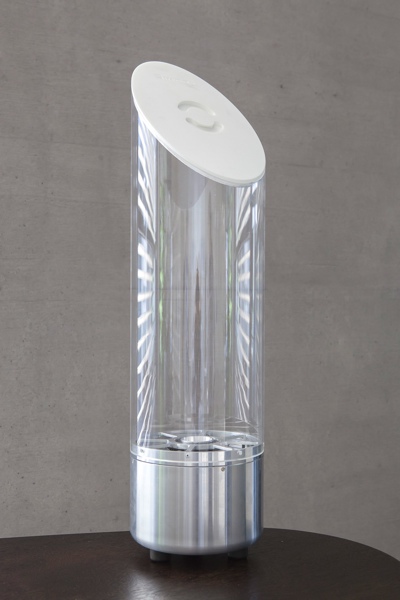Sometimes LiDAR seems as if it’s the only game in town. The truth is that the future depends on a lot of different sensors. The asset model of the future depends on heat sensors, pressure sensors, movement-detecting sensors, and now, maybe we’ll even add radar to that list.
A research team at Fraunhofer Institute for Applied Solid State Physics has developed a high-frequency radar that senses 360 degrees and “cuts through” obstacles like smoke, dust, and even certain opaque materials. The radar scanner is modular and no larger than a pack of cigarettes.
Fraunhofer’s press release makes no mention of the sensor’s accuracy, other than to say that it uses millimeter waves and can capture “can cover nearby objects as small as a centimeter in size just as easily as large surfaces that are far away.” The system’s range is dependent on the application, they say, but it can be used “at an operating distance of several hundred meters.”
This omission makes sense considering the sensor is intended for monitoring rather than measurement. The radar is designed for monitoring its surroundings to increase safety in applications “wherever people and robots work together.”
However, it outclasses laser scanners in a number of monitoring applications.

The complete radar scanner: the radar module is located in the lower silver area; the mirror is attached on the top.
It Sees the Invisible
Currently, Fraunhofer explains, laser scanners are used to “monitor the danger zone around machinery, and to stop the machine as soon as soon as a person enters the zone. However, optical sensors do not always achieve reliable results under changing light conditions. They also do not work if smoke, dust or fog obstructs the line of sight.”
Unlike a laser scanner, the radar can “see the invisible” by cutting through obstructions. It fires waves that operate at a frequency that cuts through environmental obstacles like adverse weather, but also clothing, cardboard, plastic surfaces and paper.
“Our radar is not focused on one point. Instead, it sends out millimeter waves in a club shape. Unlike a laser scanner, the signals are reflected even when visibility is obstructed by an object,” explains Fraunhofer scientist Christian Zech.
It Tracks Movement
The signals transmitted and received by the sensor are processed by algorithms that can determine the shape, distance, position, and speed of the objects in the room. If you hook up a number of them, you can map an object’s location within the room, as well as the direction it’s moving in.
Fraunhofer doesn’t give a cost estimate for these sensors (why would it? It’s a research institution…), but promises that they will be cost effective. Perhaps even cost-effective enough to make them a commodity the way 2D LiDAR sensors are becoming a commodity.
It’s not hard to imagine a number of possible uses for this kind of radar technology—but I’ll leave that to you. If you’re interested in finding out more, the researches will be demonstrating the sensor at a German-sounding conference named SENSOR+TEST in Nuremberg from May 10-12, 2016.






